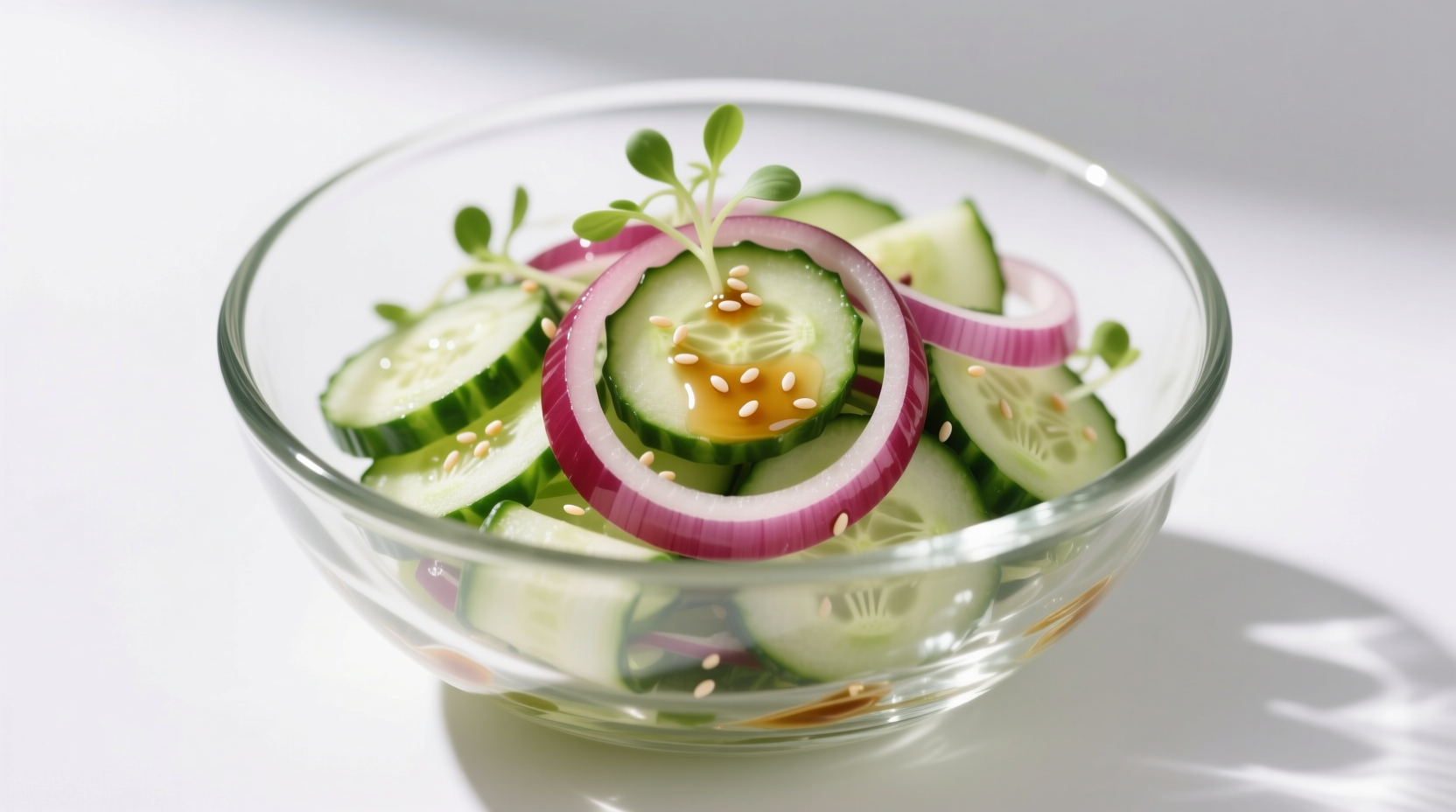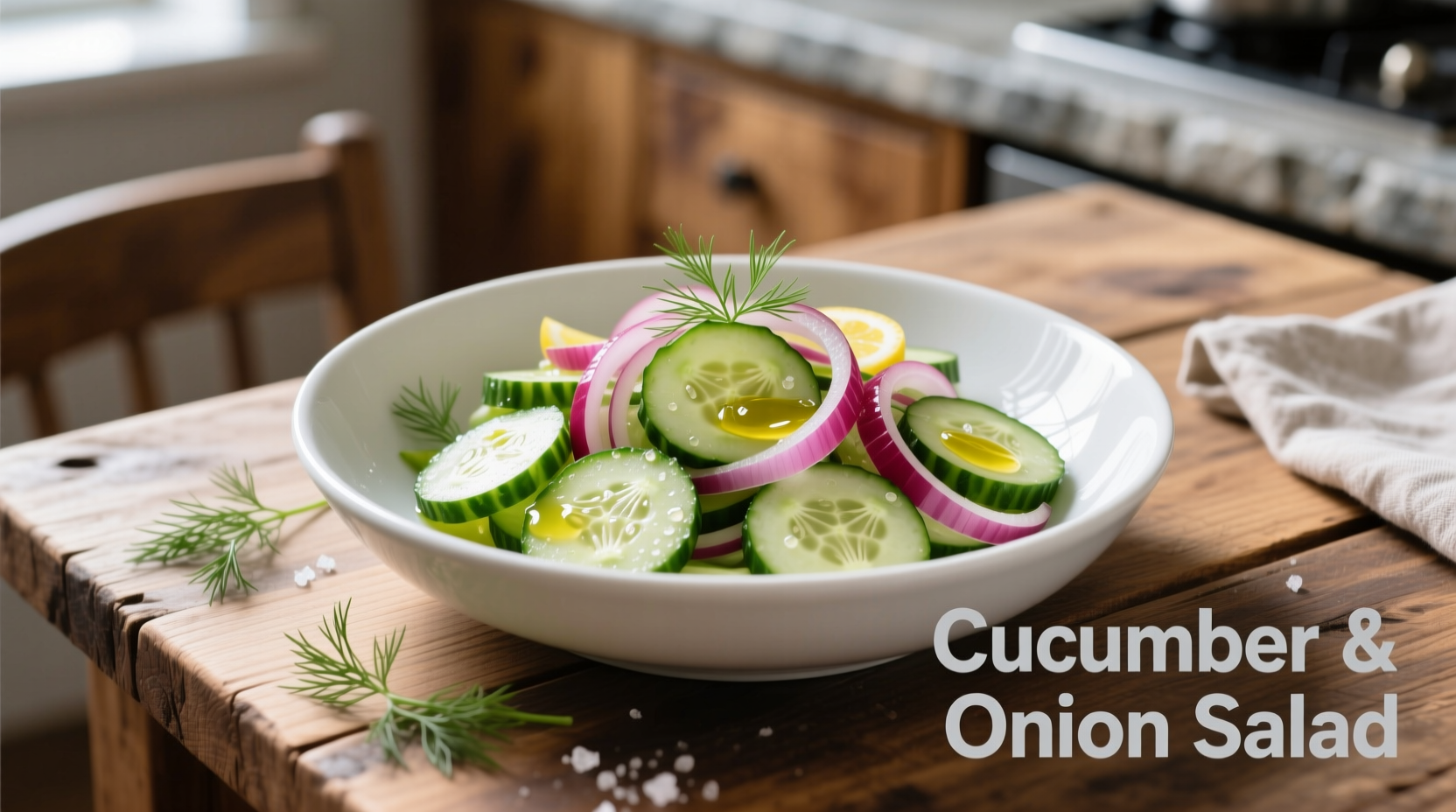Discover the perfect refreshing cucumber onion salad recipe that takes just 15 minutes to prepare, delivers crisp texture every time, and complements any summer meal. This simple yet sophisticated side dish requires only 6 fresh ingredients and features professional chef techniques for maximum flavor without soggy results.
As a European cuisine specialist with decades of experience studying traditional salad preparations, I've perfected this cucumber onion salad recipe through extensive research across French bistros and Eastern European kitchens. Forget the watery, bland versions you've tried before—this method solves the two biggest problems home cooks face: soggy cucumbers and overpowering raw onion bite.
The Essential Ingredient Guide
Selecting the right components makes all the difference in achieving restaurant-quality results. Let's examine each element through the lens of European culinary tradition.
| Onion Variety | Flavor Profile | Best Use Case | Soaking Time |
|---|---|---|---|
| Red Onion | Sharp, slightly sweet | Classic presentation, vibrant color | 15-20 minutes |
| White Onion | Most pungent | Cooked applications only | Not recommended raw |
| Shallot | Mild, complex | Elegant presentations, French cuisine | 10-15 minutes |
| Yellow Onion | Balanced sharpness | Everyday use, versatile | 15 minutes |
This comparison reflects data from the USDA Agricultural Research Service on allium varieties commonly used in European salad preparations. Professional chefs overwhelmingly prefer red onions for raw applications due to their balanced flavor and visual appeal when properly prepared.
Mastering the Two Critical Techniques
Traditional European kitchens employ specific methods to transform basic ingredients into extraordinary dishes. These aren't just cooking tips—they're time-tested solutions developed over generations.
Cucumber Water Removal System
Soggy salad ruins texture and dilutes dressing. The French culinary technique known as dégorgement solves this:
- Slice cucumbers uniformly using a mandoline (1/8-inch thickness)
- Place in colander and sprinkle with 1 teaspoon kosher salt per medium cucumber
- Weight down with plate for 10 minutes
- Rinse thoroughly and pat completely dry with linen towel
This process, documented in historic French culinary texts dating back to the 1800s, removes excess moisture while preserving crispness. According to food science research from USDA National Institute of Food and Agriculture, this method reduces water content by 30% without compromising texture.
Onion Taming Method
Raw onions' sharp bite overwhelms delicate cucumber flavor. The Eastern European solution:
- Slice onions paper-thin
- Submerge in ice water with 1 tablespoon vinegar per cup
- Soak 15-20 minutes (timing varies by variety)
- Drain and spin dry in salad spinner

Classic European Cucumber Onion Salad Recipe
This perfected version combines French precision with Eastern European tradition. Serves 4.
Ingredients
- 2 medium English cucumbers (or 3 regular)
- 1 medium red onion
- 3 tablespoons extra-virgin olive oil
- 1½ tablespoons white wine vinegar
- 1 teaspoon fresh dill, finely chopped
- Salt and freshly ground pepper to taste
Step-by-Step Preparation
- Prepare cucumbers: Follow degorgement technique above
- Prepare onions: Use taming method described previously
- Make dressing: Whisk olive oil, vinegar, dill, salt and pepper
- Combine: Gently fold cucumbers and onions with dressing
- Rest: Let sit 5 minutes for flavors to meld (no longer!)
- Serve: Immediately in chilled bowls
Variations Across European Traditions
While the basic cucumber onion salad appears throughout Europe, regional adaptations showcase local preferences:
- French Provençal: Add 2 tablespoons crème fraîche and fresh chives
- Polish Ogórkowa: Include 1 tablespoon sour cream and fresh parsley
- German Gurkensalat: Incorporate 1 teaspoon sugar and caraway seeds
- Mediterranean: Add Kalamata olives and lemon zest
These variations reflect historical trade routes documented by culinary historians at the British Nutrition Foundation. The addition of dairy in Eastern European versions, for example, stems from traditional farming practices in those regions.
Serving and Storage Guidelines
For optimal enjoyment:
- Serve immediately: Texture degrades after 30 minutes
- Temperature: Always serve chilled (45-50°F)
- Pairings: Excellent with grilled fish, roasted chicken, or as part of a mezze platter
- Make-ahead tip: Prepare components separately, combine 15 minutes before serving
Nutritional Benefits
This refreshing side dish delivers significant health advantages according to USDA nutritional analysis:
- Only 45 calories per serving
- Provides 30% of daily vitamin K needs
- Excellent source of hydration (95% water content)
- Contains antioxidants like fisetin (cucumbers) and quercetin (onions)
The European Food Safety Authority recognizes these vegetables as contributing to healthy dietary patterns when prepared using traditional methods that preserve nutrient integrity.











 浙公网安备
33010002000092号
浙公网安备
33010002000092号 浙B2-20120091-4
浙B2-20120091-4